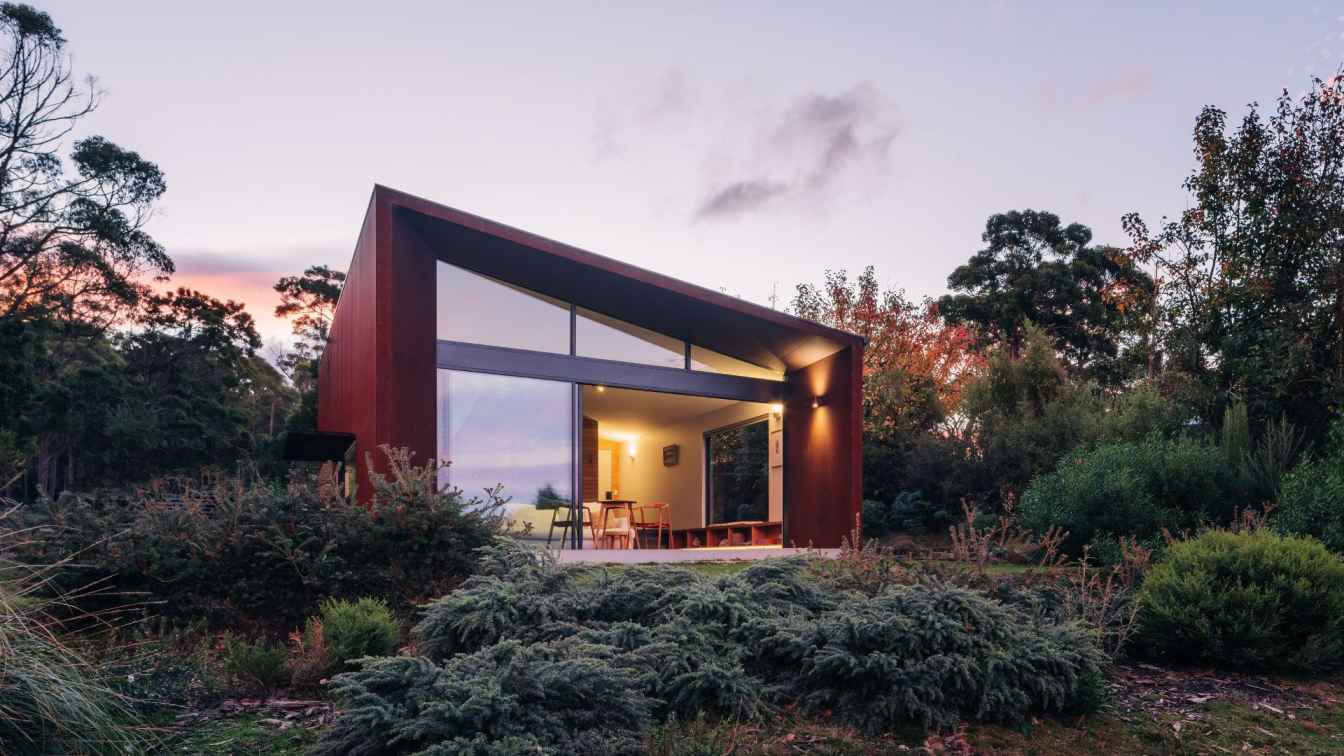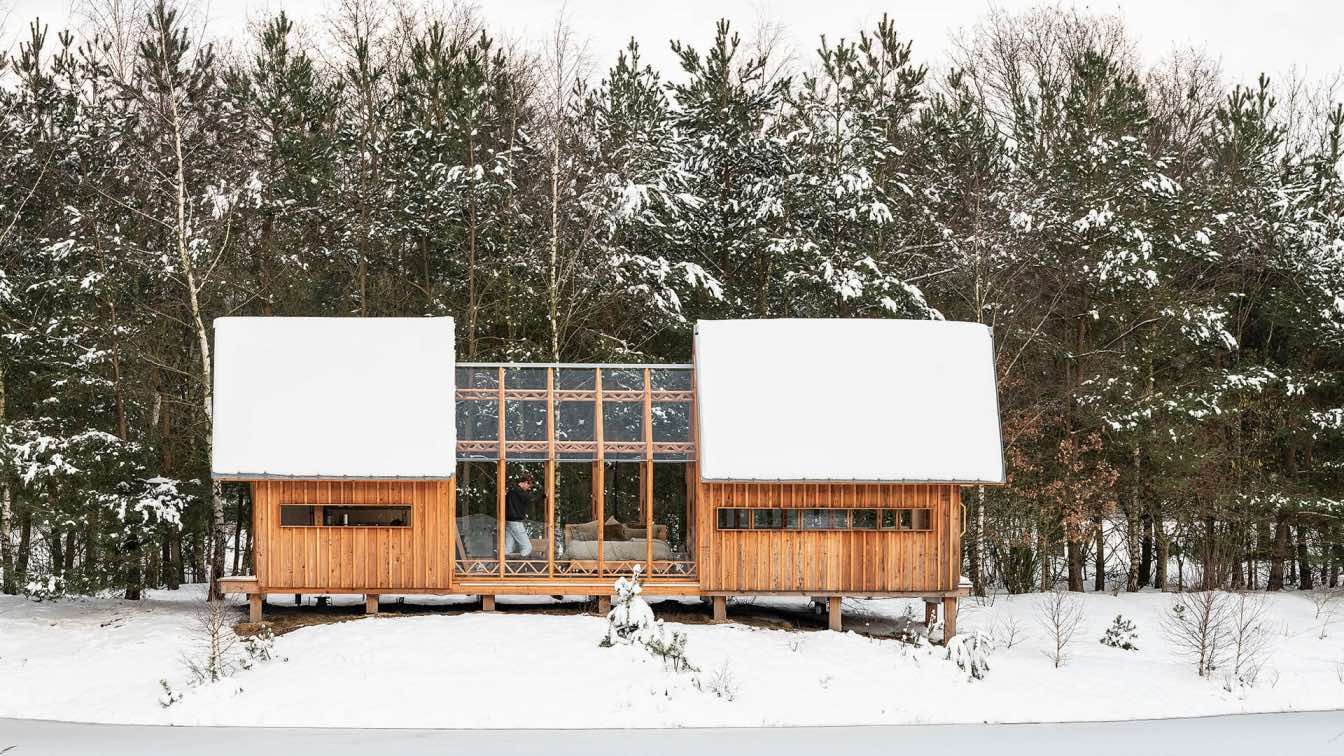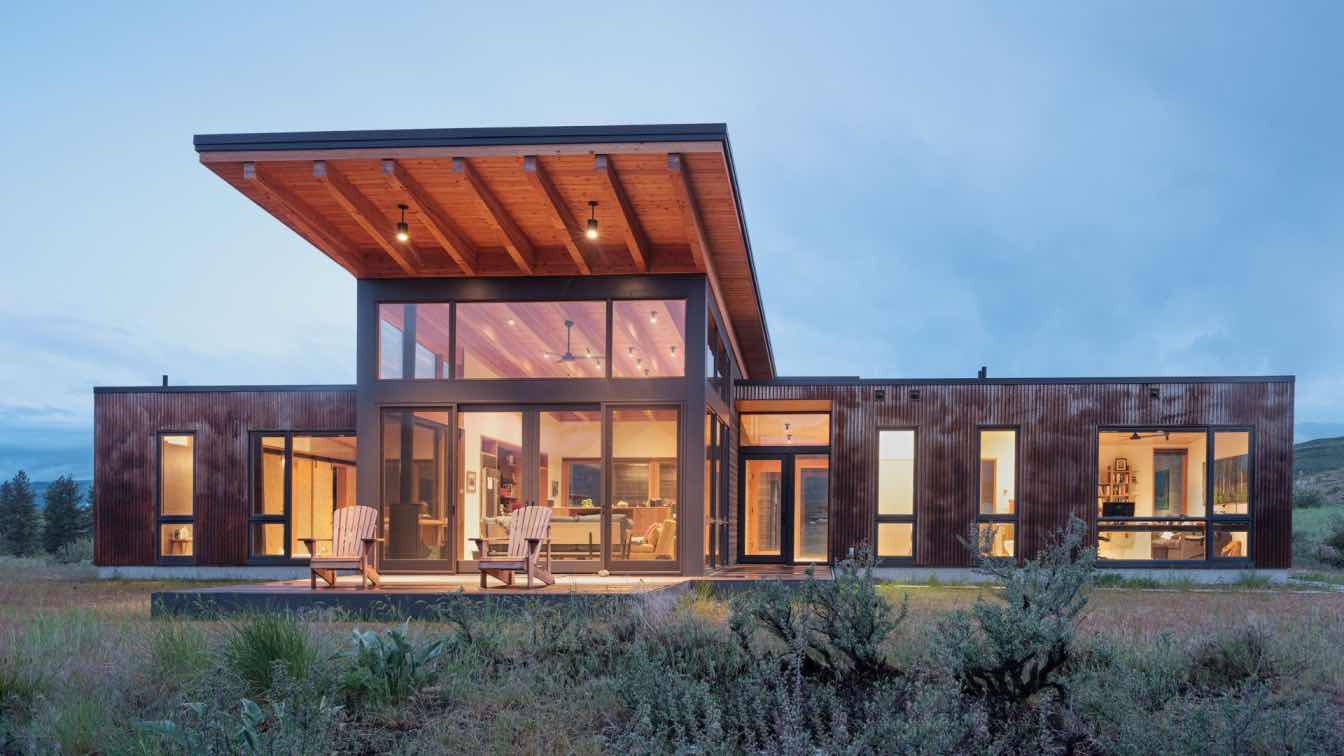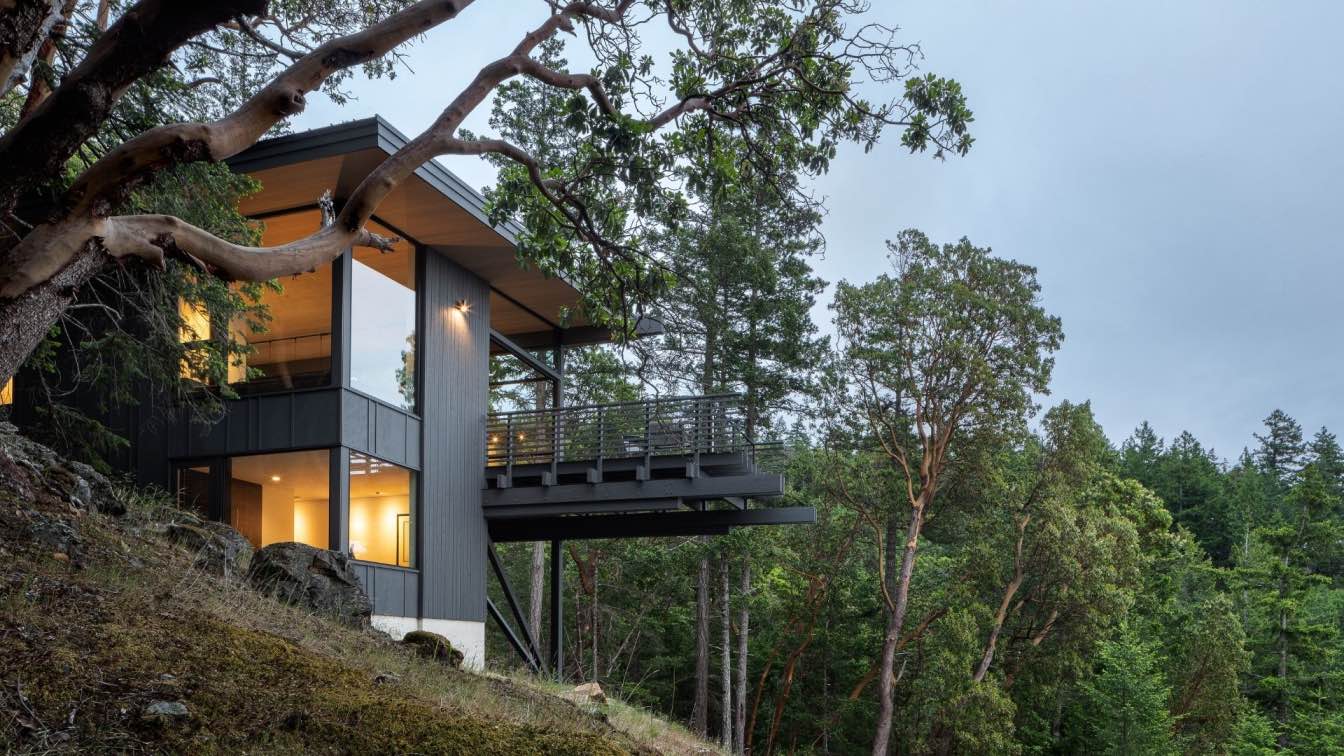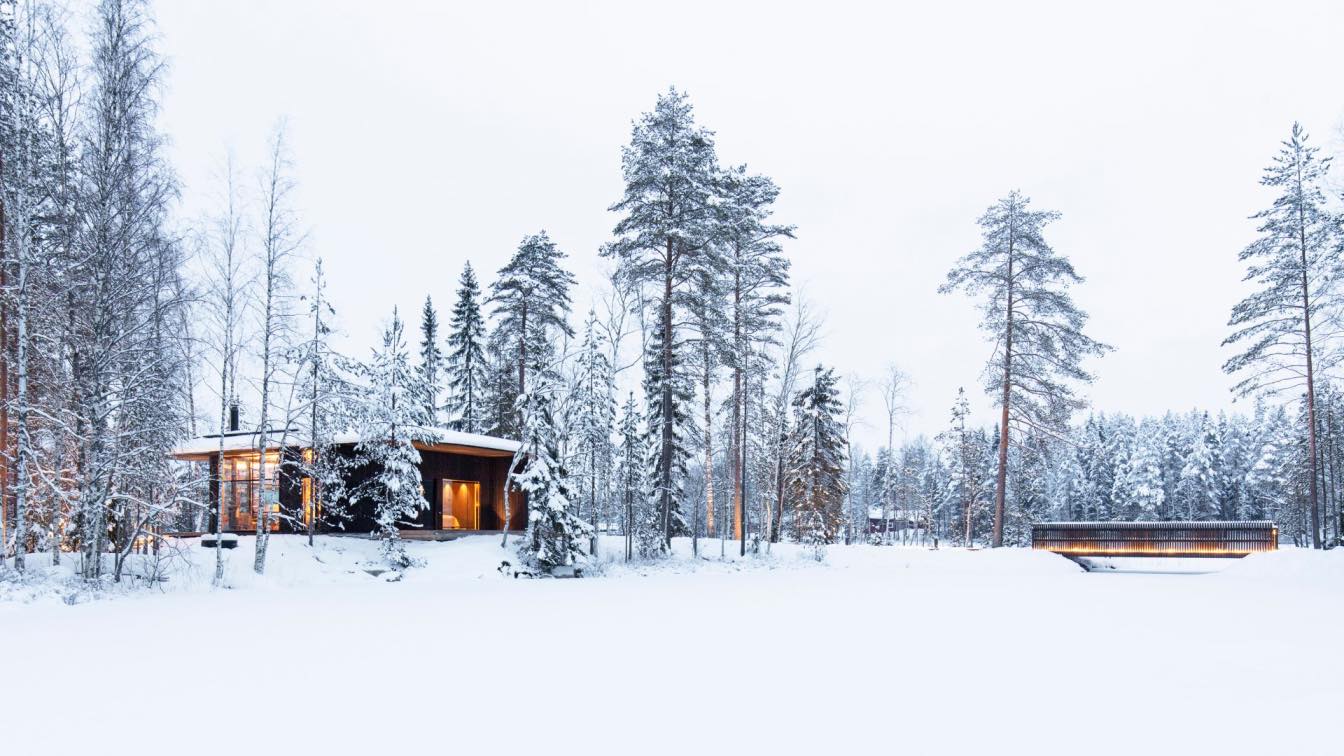Dana McCarter: The lookout cabin is perched on the eastern sea cliffs of Lunawuni (Bruny Island, Tasmania)—an island, off an island, off an island. Framed by dense bushland to the south and the vast Tasman Sea to the east, the cabin is immersed in raw landscape, designed to offer privacy, connection, and expansive views for those seeking an immersive short stay escape.
The architectural response is one of restraint—stripped back, minimal, and quietly robust. The design embraces a raw material palette, where nothing is hidden or overly finished. There are no coatings, only clear sealants and natural surfaces. The approach extends to the way of living in the space—open, uncomplicated, and adaptable to shifting weather conditions. The plan steps down with the natural contours of the site, creating a flowing internal experience that can open fully to the surrounding landscape or be closed for comfort and protection.
Off-form concrete and weathered steel define the exterior—materials chosen not just for their visual and tactile qualities, but for their suitability in meeting the demands of a site classified as ‘extreme’ fire risk. These materials settle into the landscape, ageing gracefully with exposure and reinforcing the cabin’s sense of permanence.

Inside, the palette is warm yet durable, balancing exposed concrete with recycled local timbers to create a tactile interior. The space is designed to meet the practical needs of guest accommodation, while offering a high level of comfort and amenity. Spanning two levels, the layout ensures that the expansive ocean views remain uninterrupted from every part of the living and sleeping areas. Oversized sliding doors open directly to the Tasman Sea, heightening the connection between interior and landscape.
For me, the most special part of The Lookout Cabin is how it quietly folds into the landscape—how the materials weather and change with time, and how the space opens up to the sea. It’s about creating a simple, honest place where people can step away from the noise and really feel connected to the environment. That balance between shelter and exposure feels very important—it all leads to that quiet yet comfortable immersion in the Tasmanian landscape.




































